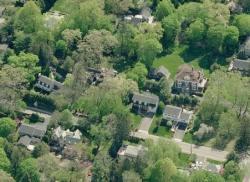Scarsdale's Deborah Skolnik Named Editorial Director of NYMetroParents
- Details
- Written by Joanne Wallenstein
- Hits: 5032
 NYMetroParents, the parenting division of Davler Media Group that publishes seven regional print magazines including Big Apple Parent and Westchester Parent and the website www.nymetroparents.com, announced the appointment of Deborah Skolnik as Editorial Director,
NYMetroParents, the parenting division of Davler Media Group that publishes seven regional print magazines including Big Apple Parent and Westchester Parent and the website www.nymetroparents.com, announced the appointment of Deborah Skolnik as Editorial Director,
Ms. Skolnik brings a wealth of experience in parenting media, including an eight-year stint as Senior Editor of Parenting Magazine, and five years as Features Editor of Parents Magazine. She also served as Managing Editor of American Baby and as Features Editor for Woman's Day, New York Daily News and McCall's. Immediately prior to joining NYMetro Parents, Ms. Skolnik held positions as multi-platform Content Manager for Myron Corporation, a multinational promotions company, and Editor of Health Matters, the quarterly magazine of White Plains Hospital. She is replacing Michael Kress, who served in the position since 2014.
"When it comes to parenting media, Deborah is one of the true, standout talents," says David Miller, Chief Executive Officer, Davler Media Group. "I am confident her vast experience, creativity and vision will be of great benefit to not only NYMetroParents, but the many ventures of our fast growing, multi-platform media company."
"I'm thrilled to be joining the talented team at NYMetroParents, the go-to parenting resource for more than a million readers and their families in New York," adds Skolnik. "Together with my colleagues, I'm looking forward to elevating this brand across all platforms and showcasing our thoughtful, savvy content to an ever-larger audience."
Davler reaches more than 1 million families each month through seven, regional magazines (Big Apple Parent, Brooklyn Parent, Long Island Parent - Nassau edition, Long Island Parent - Suffolk edition, Queens Parent, Rockland/Bergen Parent and Westchester Parent), and the online destinations, NYMetroParents.com and Mommybites.com.
A 2016 acquisition, Mommybites covers the ins and outs of parenting from infancy through toddlerhood, via online classes and webinars, web content and a host of live events, including parenting seminars, workshops, luncheons, parties and more.
NYMetroParents complements its print and online assets with two annual Parents Day events, in Long Island and Westchester Country. These gatherings bring families face-to-face with dozens of local businesses, from party planners and physicians to after school activities and tutors that can help their children thrive, from infancy through their teens.
Congrats to Deborah!
SHS Teacher Maggie Favretti Travels To Puerto Rico in the Aftermath of Hurricane Maria
- Details
- Written by Joanne Wallenstein
- Hits: 4806
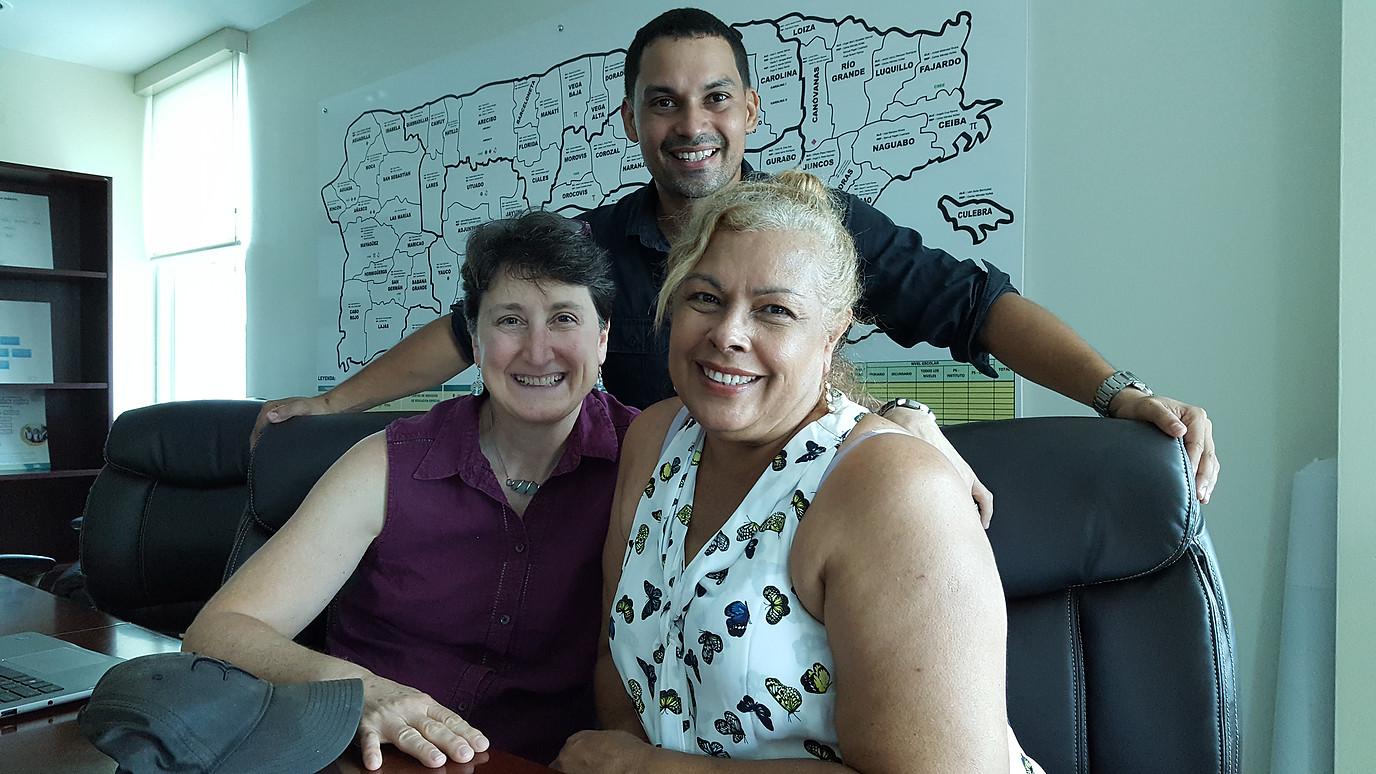 In the aftermath of Hurricane Maria, when anyone who could manage to was leaving Puerto Rico, one Scarsdale High School teacher took it upon herself to go the island to help the struggling schools.
In the aftermath of Hurricane Maria, when anyone who could manage to was leaving Puerto Rico, one Scarsdale High School teacher took it upon herself to go the island to help the struggling schools.
SHS Teacher Maggie Favretti was one of four U.S. educators recruited by the School Superintendent Association to accept an invitation from Puerto Rico's Secretary of Education Julia Keleher to fly to Puerto Rico and help to reopen the schools and re-envision the curriculum in the wake of disaster.
Favretti is well known for her innovative City 2.0 curriculum that teaches students to collaborate and use design thinking to confront global and community challenges.
She received the invite just two days before she would have to leave and scrambled to ask colleagues to help to cover her classes while she was gone and to prepare for a trip to an island in crisis. In addition to arranging for her students to be working while she was away she needed to get shots and vaccinations and purchase necessities like batteries, flashlights, solar chargers and toiletries that would not be available.
When she arrived on October 9 she found she would be housed on the ninth floor of a high rise that had no power or water. The simplest daily tasks were a struggle. In order to get water she had to walk down nine flights to a beach where a shower was still running. The island had a shortage of gasoline so the assistant to the Secretary of Education drove the team around in her mother's car as it still had gas in the tank. Without power the traffic lights were out, roads were closed and debris blocked their way. At time, it took 45 minutes to drive a half mile.
Favretti and her colleagues started to work at the Department of Education offices until the power grid crashed leaving most government offices without power or water. For the next few days they worked in seven to eight locations where there were generators, and when those ran out the ended up at the Department of Corrections where hundreds of workers from many government departments were attempting to carry on their work.
Though Favretti's group was brought to Puerto Rico to reopen the schools and rewrite the curriculum, they quickly realized that these were not the right priorities.
Favretti said, "It took a whole day to understand the magnitude of what they were asking us to do and to convince them that it was too much. It took three days to figure out the difference between what they wanted and what they needed – and what they needed and what they could do. What could I do to help the teachers function when they came back?"
The Secretary of Education had asked the teachers and principals to report back to work on October 16 and clean and rebuild schools with the goal of reopening on October 23.
After interviewing teachers, Favretti's team found that many of the teachers' homes were destroyed, flooded or filled with debris. People were exposed to viral infections and there were shortages of food. During their stay, a teacher died of cryptosporidium from tainted water. Teaching materials, books and supplies were gone and the teachers were expected to provide for their classes out of their own funds.
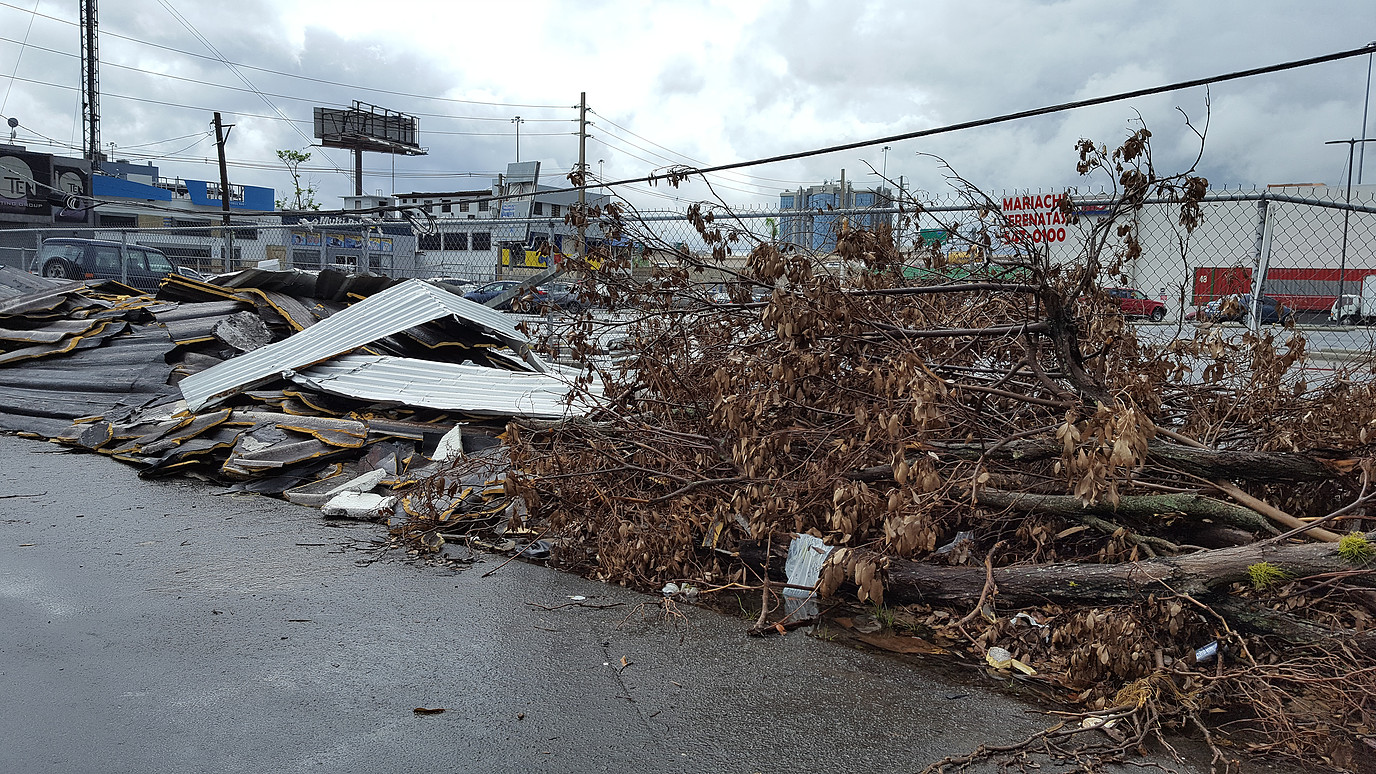 On her blog Favretti said, "We learned that teachers are expected to provide EVERYTHING. Typical teachers spend $70 a month on copying toner for their personal printers, buy paper, books, and any other materials for their classrooms, as well as painting it and the outside of the school too, at their own expense. A typical teacher is paid $25,000 per year, and living expenses are quite like New York City (because PR is an island). They have been to their schools, and have been shoveling them out, helping to fix plumbing and wiring, hoping to get generator parts, and in one case, teaching her (and others') students outside. They believe that there will be many schools without walls, water, or power come the 23rd, and do not believe that health and stability inspections will have taken place. There are 1,100 schools on the island."
On her blog Favretti said, "We learned that teachers are expected to provide EVERYTHING. Typical teachers spend $70 a month on copying toner for their personal printers, buy paper, books, and any other materials for their classrooms, as well as painting it and the outside of the school too, at their own expense. A typical teacher is paid $25,000 per year, and living expenses are quite like New York City (because PR is an island). They have been to their schools, and have been shoveling them out, helping to fix plumbing and wiring, hoping to get generator parts, and in one case, teaching her (and others') students outside. They believe that there will be many schools without walls, water, or power come the 23rd, and do not believe that health and stability inspections will have taken place. There are 1,100 schools on the island."
Favretti and her colleagues determined that the department's first concern should be the health and safety of the students, teachers and buildings. They recommended that principals take a census of who was still available to work – as many teachers and students had left the island – and that the Department of Education do inspections to assess the safety of the buildings before re-opening. They also recommended that social workers be placed at schools to help children through the trauma.
They were able to realize some accomplishments such as working out a timeline for the opening of school and outlining some lessons in design thinking that could be taught without materials. But Favretti and her colleagues ultimately realized that they could accomplish more for the Puerto Rican schools from their desks at home where they had access to their own files and were not spending their time chasing power, water or internet access.
When she returned, Favretti did draft a handbook on design thinking and problem solving that can be used to solve real world problems such as the crisis in Puerto Rico. She has sent it to her colleagues in Puerto Rico and is hopeful that it will be translated into Spanish and used in the schools.
Seeing the crisis firsthand on the island Favretti was struck by the resilience of the teachers who she says "will do anything for the kids." She also noted another positive outcome of the crisis, finding that "people are being nicer to each other."
Encouraging people here in Scarsdale to be nice, Favretti asked everyone to come to a community dinner for Hurricane Relief on Monday November 6 from 5:30- 7:30 pm at the SHS Cafeteria. You can bring a favorite dish and buy a ticket. Proceeds will go to the American Red Cross. Learn more and buy a ticket here:
Backward Thinking: The 2017 Bond Proposal
- Details
- Written by Joanne Wallenstein
- Hits: 6674
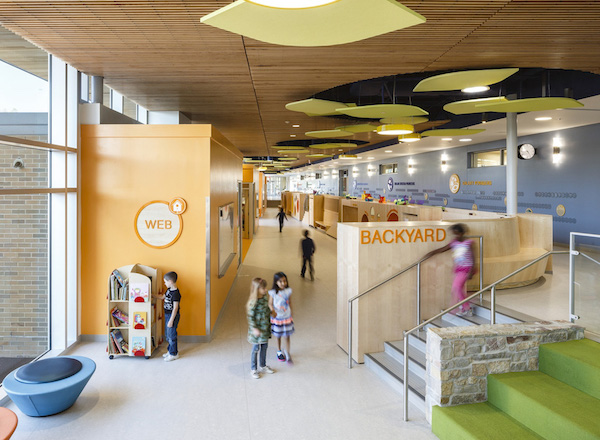 Shortly after his arrival in Scarsdale in 2014, newly appointed Schools Superintendent Thomas Hagerman was charged with a daunting task. The community was deep into planning an $18 million bond referendum for major upgrades at the high school, middle school, Edgewood, Heathcote and Quaker Ridge Elementary Schools. His first true test would be gaining voter support for this bond referendum in December, 2014.
Shortly after his arrival in Scarsdale in 2014, newly appointed Schools Superintendent Thomas Hagerman was charged with a daunting task. The community was deep into planning an $18 million bond referendum for major upgrades at the high school, middle school, Edgewood, Heathcote and Quaker Ridge Elementary Schools. His first true test would be gaining voter support for this bond referendum in December, 2014.
In a presentation to the community about the 2014 bond, here's what Dr. Hagerman said:
"One of the primary reasons that I came to the Scarsdale Public Schools was because of its clear mission to help students to reach their full potential and to prepare them for future learning and life. It is not uncommon to find this motto in vision statements of school districts across the country. However, in my experience, this is not an accurate portrayal of what typically occurs in classrooms, particularly in light of preparing students for an ever-changing, inter-connected, and global society. It is Scarsdale's commitment to 21st century learning, innovation, problem-solving and critical thinking that truly sets us apart.
And yet, there is a danger in becoming complacent and allowing ourselves to drift towards mediocrity. Most of the knowledge that I learned in school can easily be found on a smartphone today; but conceptual and enduring understandings come from learning within a social construct. It requires facilitation from effective instructors and collaboration with other, engaged peers. Moreover, the environment in which this learning takes place is critical. 21st century learning benefits from flexible spaces and furnishings, access to an array of resources and technologies, and the ability to make interdisciplinary and "real world" connections. To respond to the challenge of meeting our students' future needs, teaching and learning must change—and it is. To a large extent, however, our buildings have not.
Over the past three months, I have had the opportunity to review the facilities work to date, and I am pleased at the progress thus far. What is more impressive, however, is that the Board of Education and District understand their dual charges with this work: to address the programmatic needs that will keep Scarsdale at the forefront of educational excellence, and to provide facilities that are not only well-maintained, but also respond to changes to pedagogy and practice."
Fast forward to a much larger bond proposal that is in the works today. The administration is proposing a $66.8 million bond referendum. Of this, $36.7 million would go to Greenacres Elementary School and the balance to a long list of repairs at the other schools. Most of the money is allocated toward roofs, boilers and a massive cafeteria/classroom addition at Greenacres, with very little discussion about 21st century learning, critical thinking and how buildings should facilitate the Scarsdale Education for Tomorrow.
In fact, much of what is proposed feels more like repairs for the Scarsdale Education for Yesterday.
At Greenacres Elementary School, which the administration willingly admits has been neglected for years, the bond proposal shores up infrastructure issues but does little to provide innovative new spaces for 21st century learning. It remediates the antiquated facilities using filters for the water, dehumidifiers for the damp basement, blowing hot air around stuffy rooms and replacing bathrooms without running new pipes or making them ADA compliant.
Specifically, the plan calls for a mammoth addition on the Huntington Road side of the school, including a large cafeteria, though a cafeteria was not one of the priorities identified by previous committees that studied the building. At the same time as the district is planning to provide food service, the school's lead pipes that supply drinking water to the sinks and fountains will not be replaced, and the district will have to continue to rely on monitoring and filtering to provide safe water to the students and teachers.
The existing classrooms in the school, some 100 years old, will remain as is, each to receive a new coat of paint and floor tiles. Teachers complain that these rooms are way too small, falling 200 square feet below recommended standards.
Larger classrooms should be a goal at Scarsdale elementary schools, as the administration is seeking to keep more special needs children in district rather than place them in schools outside Scarsdale. In fact the administration has made a decision to exceed our designated class size caps by allowing classes of more than 22 students in grades K-3 and more than 24 students in grades 4 and 5 for inclusion classes which have two teachers and mix kids with special needs with the general population. Since these classes are large and involve small group learning, wouldn't it make sense to move some walls and expand these 700 square foot classrooms to regulation size (900 square feet) to accommodate these larger classes?
What's more – the community was originally told that the classrooms at Greenacres would be models for the rest of the district and set standards for future renovations. However, if the district has any plans to update these rooms or include new 21st century learning features, this information has not yet been communicated.
Instead of addressing Greenacres, the administration has recommended boiler and roof replacements at almost all district schools, which were given only a "Priority 3" in the facilities survey. The proposed bond referendum calls for the district to get way ahead of itself in the roofing department by allocating $9.2 million to roofs, some of which are not yet due for replacement. Here's the schedule: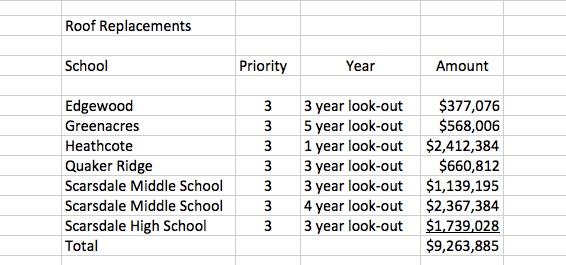
Another persistent issue at Greenacres has been mold and mildew on the lower level of the school. What's to be done? The plan calls for the children to be removed from this level and the installation of dehumidifiers. As far as I 'm concerned, if the mold and mildew problem cannot be corrected to the extent that it's safe for kids and teachers to continue to spend the day on the lower level, the building is not fit for a $36.7 million renovation. What if the mold has spread into the piping and infrastructure of the building and the dirt crawl spaces under the older portions of the school? How will we ever know? The district denies there is a problem but has failed to release documentation I requested by FOIL (Freedom of Information Law) months ago.
Air conditioning is another issue. Administrators defend their decision NOT to cool the older portions of the school, saying that it's hot in other schools as well. That's the same defense they use for leaving the lead pipes in place -- arguing that there's lead at other district schools too. In short, they are suggesting that we renovate to the lowest possible standard rather than seek to build facilities that will endure for the coming decades.
In order to meet current fresh air standards, the proposed bond includes $9.2 million for the installation of unit ventilators at Greenacres and across the district. This is a low cost way to meet air quality needs, but according to the New Hampshire Department of Education these units are noisy, have poor air distribution (making some parts of the room hot and the other side cold) and bring in outdoor pollutants like pollen, mold spores and vehicle exhaust. See more below*
The future price tag for Greenacres might even be higher and the timeline even longer if unexpected conditions are found during construction. In the district-wide facilities plan, architects identified $6 million more in infrastructure work that will be needed for repairs to the older portions of the school.
And what of the design? For the 2014 bond projects, the district retained architects KG&D who based all design decisions on future trends in education. They included flexible learning spaces, areas for small group meetings and windows to bring natural light inside. By contrast, the plan put forth by the new architects BBS, appear to be based on minimizing costs and making the best out of undesirable circumstances. For instance, in order to add eight classrooms to the front of the school, the addition will cover up the large windows on the Greenacres gym that will not be renovated -- though it too is 100 years old. Kids will be left with a windowless space in which to play. The antiquated stage in the gym will remain the school's only performance space and it will not be air-conditioned.
Imagine the moving up ceremony in June, with hundreds of parents and children packed into a windowless space without air conditioning? What could possibly be the justification for these choices? There must be more design options that would give the school an updated gym and a gathering space with a stage for plays, concerts and presentations.
The library at Greenacres will also remain as is. Currently a $3.56 million library, "designed as a Media and Research Center, integrating the resources of the computer lab with other materials" is being built at Edgewood. According to the 2014 bond presentation "The renovated space will promote collaboration and inquiry, providing the customary children's literature, along with multimedia equipment, online resources, video-conferencing, and the teacher guidance that 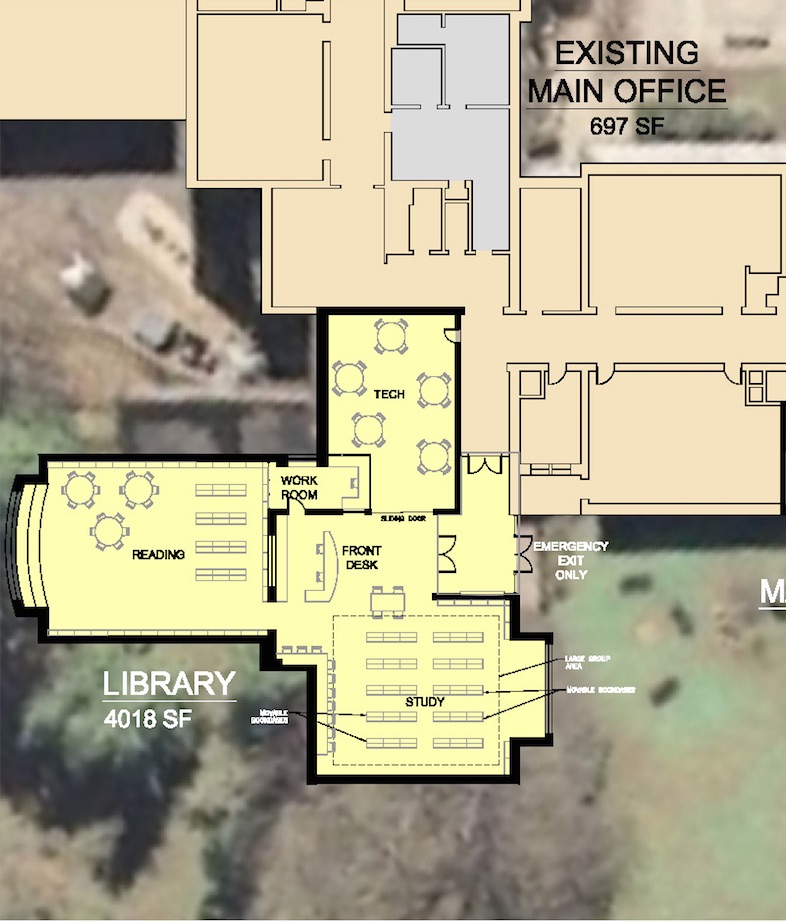 students need to achieve the goals of Scarsdale's Education for Tomorrow. The library will also provide a place for many in the school to gather. This space will be used when the faculty comes together for meetings, professional development and special events, for parent receptions, and for student programs that involve an entire grade. Events such as news programs, video interviews, and alumni programs will all occur here."
students need to achieve the goals of Scarsdale's Education for Tomorrow. The library will also provide a place for many in the school to gather. This space will be used when the faculty comes together for meetings, professional development and special events, for parent receptions, and for student programs that involve an entire grade. Events such as news programs, video interviews, and alumni programs will all occur here."
Why not build a similar facility at Greenacres?
Green Space: The new three-story addition with eight classrooms and a cafeteria extends practically to the curb of Huntington Road, leaving almost no green space around the school or room for children to wait outside to cross the street to the playground or to be picked up after school. The traffic, congestion and safety that are issues now will only be exacerbated by this plan. Why not hire traffic and safety consultants to review this? The administration has responded that "it's not necessary."
The small rear playground at the back of the school includes a very steep hill. Since this is the area for the youngest children to play, parents asked if this playground could be re-graded to provide a flat playing surface and decrease the danger of kids jumping off the hill. Again this work is not part of the new plan.
Design Alternatives: The community was given no design options. On August 24th the current plan was presented as a fait accompli. There were no design alternatives presented and both the board and the administration gave lip service to all the questions about the plan posed by parents and the community. In response to questions about the school, the board has repeatedly responded, "It is what it is," "it's a done deal" and "that ship has sailed."
Most troubling to parents of young Greenacres children is the issue of where the children will be during the two-year construction project. The construction managers, the administration and even the principal assert that they will be "just fine" inside the school while the work is done. Parents fear asbestos, lead dust and continuous noise that will impede learning and risk kid's health, and the proposed plan now include $1.9 mm for temporary classrooms on the field, noise and air monitoring and temporary air conditioning in the current classrooms.
But even if the parents are successful at ensuring their kids' safety during the construction, should we all vote for a $36.7 million project that few people want and most see as a mediocre compromise? A quick look around the internet for construction projects in other districts yields photos of green, sustainable schools with features like flexible learning spaces, performance spaces, design labs, roof gardens, outdoor classrooms and media centers that are built for about $40 million. Shouldn't the district explore some innovative design approaches before settling for something that pleases almost no one?
What happened to Dr. Hagerman's commitment to buildings to facilitate 21st century learning?
Indeed it's a sad day for a district that claims to set nationwide standards for public education. I think we can do better– and I am sure you do too.... regardless of your elementary school district. A rising tide lifts all boats. Ask your administration and Board of Education to explore solutions that align with Scarsdale's educational mission and meet the needs of kids of today and tomorrow.
*Here's what the New Hampshire Department of Education has to say about unit ventilators:
Unit ventilators were mentioned above as one of several types of heat distribution equipment. Unit ventilators are a system frequently found in hotel rooms and are also very common in school buildings, primarily because of their relatively low initial cost.
Unit ventilators provide both heat and fresh air to each individual room, and can be used to provide air conditioning. One of the attractive features of a unit ventilator is that it allows the occupants of each room to adjust the temperature in each room individually, but unit ventilators have several drawbacks:
(1) Poor air and heat distribution. Fresh air is brought into the room at one location along a side wall. It is difficult to evenly distribute the air throughout the room. Frequently the students seated close to the unit ventilator are too hot while those on the other side of the room are too cold.
(2) Unit ventilators are noisy and become more so over time as parts wear and fans become unbalanced.
(3) The air intake, at least on the first floor level, occurs very close to the ground which means that pollutants like pollen, mold spores, or vehicle exhaust can be drawn into the room. Since every room must have its own intake, it is difficult to place the intakes away from the bus parking area or other sources of pollution. Only average rated filters for removing contaminants from the air are made for installation in unit ventilators.
(4) Students or teachers may place objects on the units which block air flow into the room or damage the equipment. They may intentionally block the air flow because of the draft it creates.
(5) Significant maintenance is required on these systems.
(6) The mechanical equipment is located within each classroom which means that maintenance cannot be performed while class is in session.
(7) Unit ventilators are not energy efficient. The fans use a great deal of electricity.
The Department of Education does not recommend the use of unit ventilators in school HVAC systems. The U.S. Department of Energy Best Practices Manual says that almost any other system is preferable to unit ventilators.
Letter to the Editor: Detailed Design Documents are Needed for Greenacres
- Details
- Written by Joanne Wallenstein
- Hits: 4362
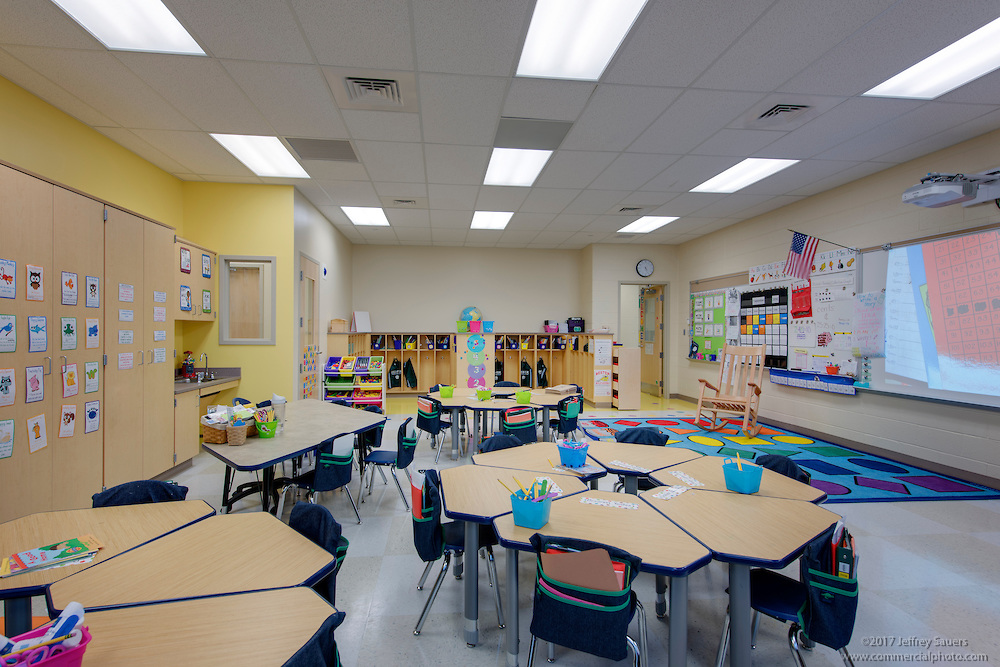 This is a letter to Scarsdale10583.com from Robert McFarlane, a Greenacres resident and engineer who attended the Greenacres Neighborhood Association meeting on October 19. The meeting brought together members of the school administration, the school board, the architects and construction managers with the community to review plans to renovate Greenacres Elementary School. Here are some thoughts from Mr. McFarlane who posed a question at the meeting about the term, "Value Engineering."
This is a letter to Scarsdale10583.com from Robert McFarlane, a Greenacres resident and engineer who attended the Greenacres Neighborhood Association meeting on October 19. The meeting brought together members of the school administration, the school board, the architects and construction managers with the community to review plans to renovate Greenacres Elementary School. Here are some thoughts from Mr. McFarlane who posed a question at the meeting about the term, "Value Engineering."
The question I raised at the meeting of 10/19 stems from decades of experience with what happens when project scopes and budgets don't match. The project breadth and depth laid out by the Architect at the information meeting was impressive, and very clearly presented. I would personally have no problem supporting a Bond Issue based on what was shown and described at that meeting.
However, the Construction Manager ("CM" in the vernacular of the trade) said two things in his presentation that, taken together, raise my concern. First is that they will do new budget estimates "when they have the design drawings". Based on the project schedule presented, those won't actually be available until late 2018 if memory serves correct. Second was the large notation on a CM slide that said "Value Engineering", usually just called "VE".
The term "Value Engineering" originally meant that designers reviewed their work to find ways that, in retrospect, could provide the same result, or sometimes better, with less complexity and at lower cost. Virtually all designs were reviewed in this manner before going out, and often Bidders and Contractors submitted suggestions as well. Unfortunately, in this age of "fast, cheap and low bid", the term now causes angina with most designers. It has essentially become a euphemism for Cost Cutting. "Find ways to cut the cost by X percent, by either reducing materials quality, cutting detailing, eliminating useful details that can be left out, or deferring amenities to a future time."
Perhaps the first round of "VE" can be useful in trimming fat, although most public projects today have been reviewed and trimmed significantly before they even go to bid. Normally, as a result of these reviews, a number of things that are wanted, and should probably be included, end up listed in the Bid as "Add Alternates" in the hope they can be bought if the bids come in low enough. Most often, all or most end up gone. If those turn out to be the things that would make this project truly worthwhile, instead of just "Bare Bones", people will wonder what happened, and many will be quite upset.
I have actually worked on public projects that went through as many as seven rounds of what the designers end up calling "Valueless Engineering" as the project was being built. When that happens, the designers lose pride in their work, and the Clients lose the result they expected.
I truly hope the cost estimates being prepared are based on sufficiently complete and detailed design documents that the resulting Bond Issue will include a realistic figure for this important project. However, no real evidence of that was shown at the meeting, and members of the Building Committee raised questions indicating that the project scope presented in that meeting exceeded what they understood would actually be done. If there really is a significant disconnect, property owners could find themselves voting on a important Bond Issue with the expectation that this critical project will include much more than will actually be possible. In a project of this kind, it's quite plausible that "existing Conditions" will be uncovered during construction that eat up contingencies, requiring additional rounds of "Valueless Engineering" in order to make further cuts even as work is going on. I sincerely hope not, but experience tells me to be cautious.
In short, I think it is very important, prior to asking for a taxpayer vote, that the actual Bid Scope be clearly defined for the public, including delineation of what may be listed as "Add Alternates", and that the CM clearly confirm that the budget estimates have been based on that scope.
Robert E. McFarlane
1247 Post Road
Scarsdale
Concours d'Elegance Draws Over a Thousand to Scarsdale Village
- Details
- Written by Joanne Wallenstein
- Hits: 4747
 Glorious fall weather and an amazing array of vintage and exotic cars brought out the biggest crowd ever to Scarsdale Village for the Scarsdale Concours d'Elegance who held their 14th annual event on Sunday October 1.
Glorious fall weather and an amazing array of vintage and exotic cars brought out the biggest crowd ever to Scarsdale Village for the Scarsdale Concours d'Elegance who held their 14th annual event on Sunday October 1.
We met local car aficionados as well as enthusiasts from far and wide as we strolled the event and admired a wonderful display of wheels.
In addition to the car owners, we chatted with artist Pat Dougherty who specializes in drawing exotic cars and was hard at work at he easel in the midst of the show.
We also ran into Denise Koslowsky and the team from Advocate Brokerage who was one of the show's sponsors along with the family of Paul Jimenez who was raising funds for the PaulieStrong Foundation that is raising awareness about childhood cancer, raising money for research and advocating for new therapies. Learn more and give here.
Sandy Miller who helped to organize the event shared the following about the show:
"We had a truly spectacular turnout, the best in several years. We had over 140 show cars, plus about 10 new and exotic cars brought in by two of our sponsors, Pepe Motors and Miller Motorcars.
We estimate that we had well over 1,000 attendees throughout the day.
While we're still tallying everything up, we are confident that we'll be able to exceed last year's aggregate donations made by the Scarsdale Concours Foundation of $15,000, which will go to these three very worthy causes:
- The Paulie Strong Foundation
- Scarsdale & Edgemont Family Counseling Service
- Warrior & Family Assistance Fund
We would like to thank the Village of Scarsdale, all the enthusiastic exhibitors, supportive sponsors and awesome attendees for coming and supporting this great event and our worthy causes!"






























